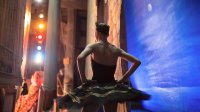A Maker Movement for a World Beyond Things
What about the makers who give us poetry, mathematics, philosophy, and dance? Students need opportunities to explore making beyond materialism.
Your content has been saved!
Go to My Saved Content.What does it mean to be a “maker”? Why has maker culture been limited to digital technology and materialism? What message are we sending students when “making” has mainly been aligned with Silicon Valley, wealth, and the world of material things?
Maker culture has become a hot topic in education circles these days. Maker culture and the maker movement is largely driven by our ability to use our hands and new technology to make things that were once only possible for big industry to make. Its roots are in DIY punk culture, the hacking community, the rise of affordable making technology like 3D printers, and the success of famous tinkerers like Steve Jobs and Elon Musk (the chief architect of Tesla Motors).
Artists have also been a major influence in the maker movement. The studio practices of artists have influenced how we think about making in areas of creative collaboration, project-based learning, and experiential education.
Yet, many artists are trading their studio practice for a post-studio practice. Post-studio artists create experiences, performative works, and short-term installations in the wider world outside the studio.
Material-Free Makers
By not making the studio the central location of their practice, these artists are embracing the notion that art and the creative spirit of making are more than just making objects that are meant to be displayed, looked at, and bought and sold. In a post-studio practice, we are brought into the true heart of making that goes back to our earliest human ancestors—makers who gave us language, song, mathematics, dance, religion, philosophy, and poetry.
Educators and parents should embrace this post-studio approach in the the teaching and raising of our kids so that they can understand that being a maker is really about having the direct experience of creation. Despite the smartphone in my pocket, I still believe that the most powerful of creations is in a realm beyond things, in the world of thoughts, ideas, and the imagination.
The Heart of Maker Curricula
Yes, new tech can be awesome, but beneath this celebration of new technology and making things, we discover that the true heart of the maker curricula is discovering what it means to be engaged in the world in the most direct way and no longer be only passive consumers.
Besides, don’t we have enough things already?
Currently, we are in a rut with things, whether we’re dealing with the manufacturing of things, the buying of things, the disposal of things, or the waste and pollution that are by-products of taking things out of the earth just so we can make even more things.
Is it really revolutionary that we can now make more things in our classrooms and garages, most of which we don’t really need?
So here’s to our makers of poetry, philosophies, and dance moves. Here’s to our makers of food and friendships. These heroes should be celebrated and be role models for our students and kids to discover the magic of making in a world beyond things.
